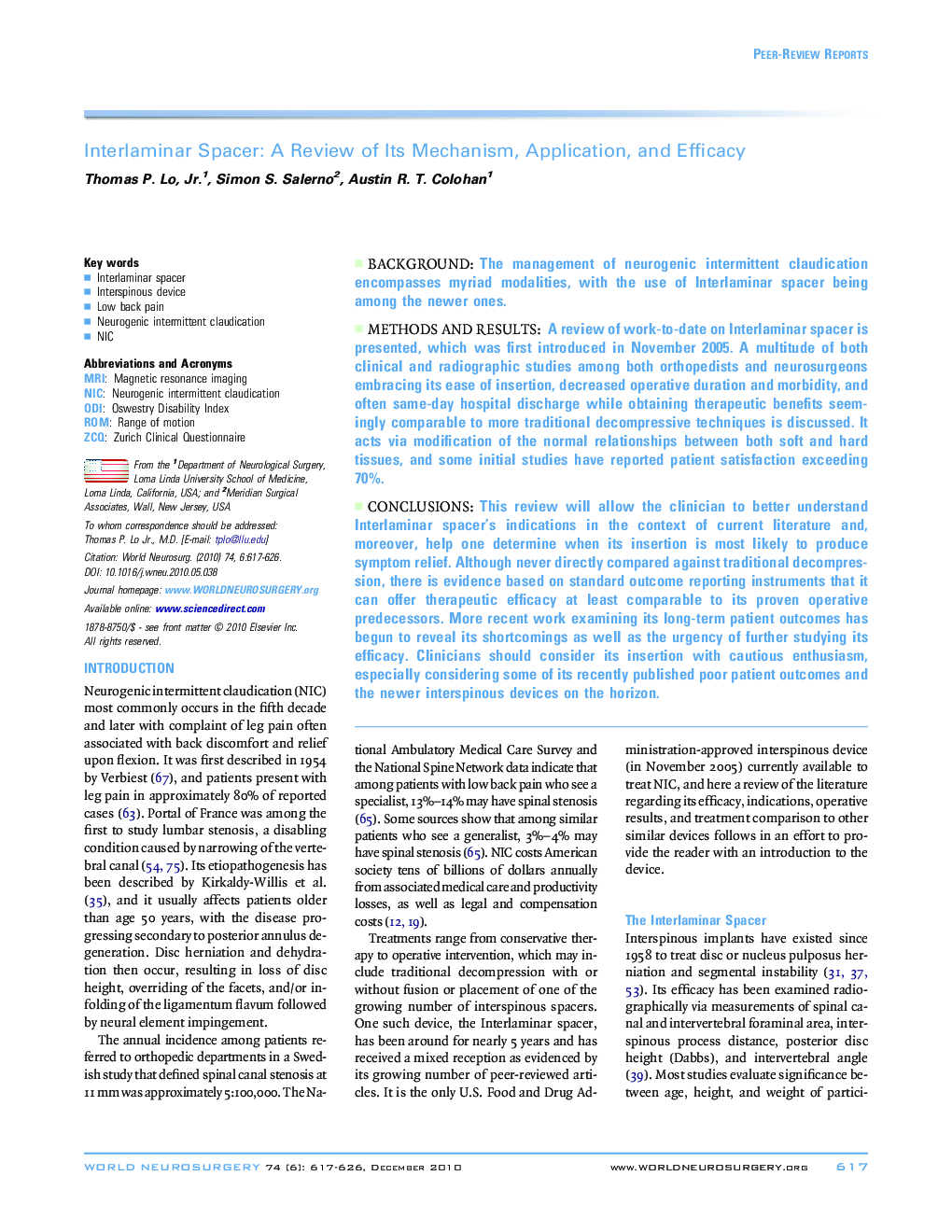| Article ID | Journal | Published Year | Pages | File Type |
|---|---|---|---|---|
| 3097504 | World Neurosurgery | 2010 | 10 Pages |
BackgroundThe management of neurogenic intermittent claudication encompasses myriad modalities, with the use of Interlaminar spacer being among the newer ones.Methods and ResultsA review of work-to-date on Interlaminar spacer is presented, which was first introduced in November 2005. A multitude of both clinical and radiographic studies among both orthopedists and neurosurgeons embracing its ease of insertion, decreased operative duration and morbidity, and often same-day hospital discharge while obtaining therapeutic benefits seemingly comparable to more traditional decompressive techniques is discussed. It acts via modification of the normal relationships between both soft and hard tissues, and some initial studies have reported patient satisfaction exceeding 70%.ConclusionsThis review will allow the clinician to better understand Interlaminar spacer's indications in the context of current literature and, moreover, help one determine when its insertion is most likely to produce symptom relief. Although never directly compared against traditional decompression, there is evidence based on standard outcome reporting instruments that it can offer therapeutic efficacy at least comparable to its proven operative predecessors. More recent work examining its long-term patient outcomes has begun to reveal its shortcomings as well as the urgency of further studying its efficacy. Clinicians should consider its insertion with cautious enthusiasm, especially considering some of its recently published poor patient outcomes and the newer interspinous devices on the horizon.
